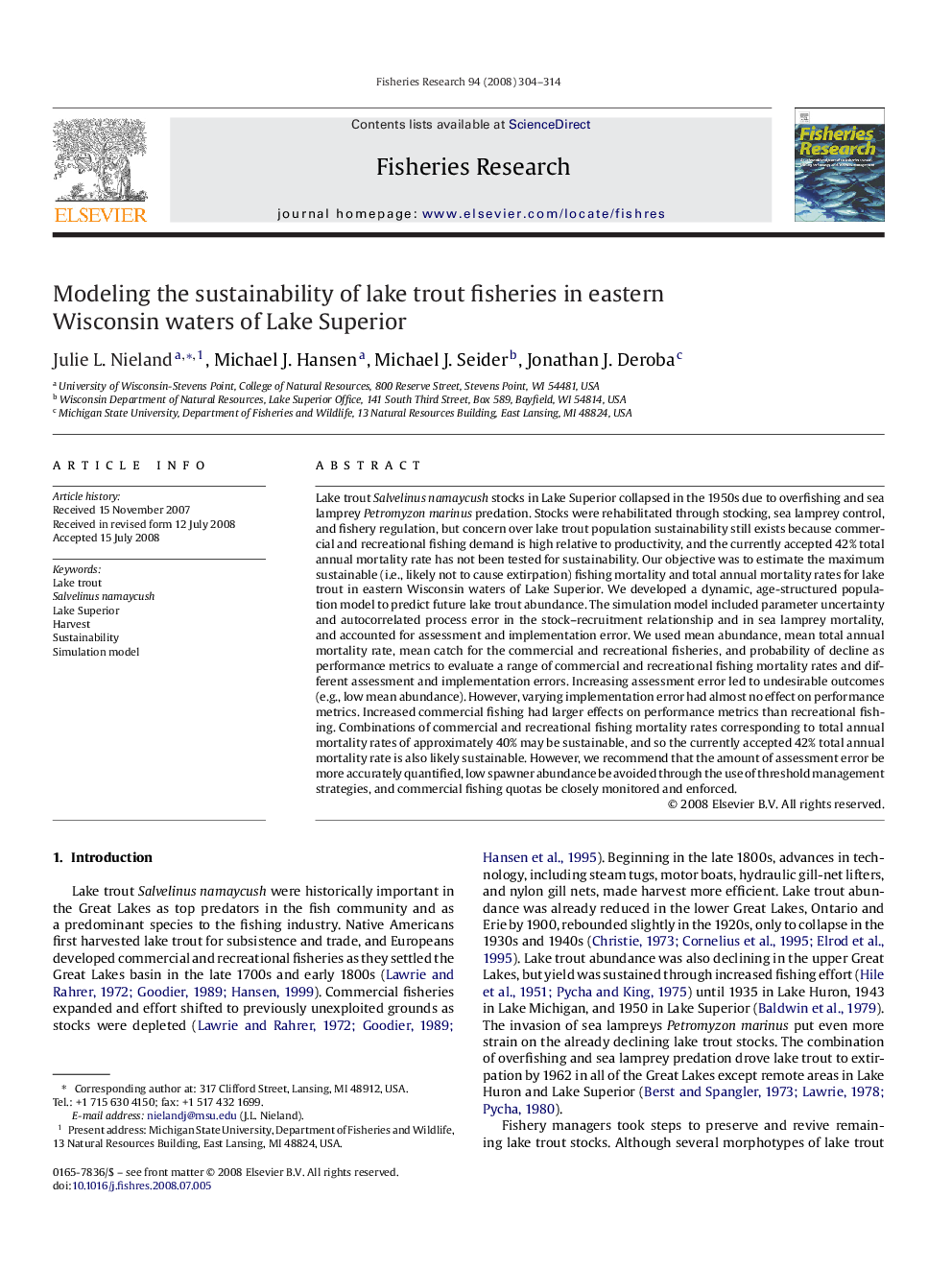| کد مقاله | کد نشریه | سال انتشار | مقاله انگلیسی | نسخه تمام متن |
|---|---|---|---|---|
| 4544485 | 1327197 | 2008 | 11 صفحه PDF | دانلود رایگان |
عنوان انگلیسی مقاله ISI
Modeling the sustainability of lake trout fisheries in eastern Wisconsin waters of Lake Superior
دانلود مقاله + سفارش ترجمه
دانلود مقاله ISI انگلیسی
رایگان برای ایرانیان
کلمات کلیدی
موضوعات مرتبط
علوم زیستی و بیوفناوری
علوم کشاورزی و بیولوژیک
علوم آبزیان
پیش نمایش صفحه اول مقاله

چکیده انگلیسی
Lake trout Salvelinus namaycush stocks in Lake Superior collapsed in the 1950s due to overfishing and sea lamprey Petromyzon marinus predation. Stocks were rehabilitated through stocking, sea lamprey control, and fishery regulation, but concern over lake trout population sustainability still exists because commercial and recreational fishing demand is high relative to productivity, and the currently accepted 42% total annual mortality rate has not been tested for sustainability. Our objective was to estimate the maximum sustainable (i.e., likely not to cause extirpation) fishing mortality and total annual mortality rates for lake trout in eastern Wisconsin waters of Lake Superior. We developed a dynamic, age-structured population model to predict future lake trout abundance. The simulation model included parameter uncertainty and autocorrelated process error in the stock-recruitment relationship and in sea lamprey mortality, and accounted for assessment and implementation error. We used mean abundance, mean total annual mortality rate, mean catch for the commercial and recreational fisheries, and probability of decline as performance metrics to evaluate a range of commercial and recreational fishing mortality rates and different assessment and implementation errors. Increasing assessment error led to undesirable outcomes (e.g., low mean abundance). However, varying implementation error had almost no effect on performance metrics. Increased commercial fishing had larger effects on performance metrics than recreational fishing. Combinations of commercial and recreational fishing mortality rates corresponding to total annual mortality rates of approximately 40% may be sustainable, and so the currently accepted 42% total annual mortality rate is also likely sustainable. However, we recommend that the amount of assessment error be more accurately quantified, low spawner abundance be avoided through the use of threshold management strategies, and commercial fishing quotas be closely monitored and enforced.
ناشر
Database: Elsevier - ScienceDirect (ساینس دایرکت)
Journal: Fisheries Research - Volume 94, Issue 3, December 2008, Pages 304-314
Journal: Fisheries Research - Volume 94, Issue 3, December 2008, Pages 304-314
نویسندگان
Julie L. Nieland, Michael J. Hansen, Michael J. Seider, Jonathan J. Deroba,